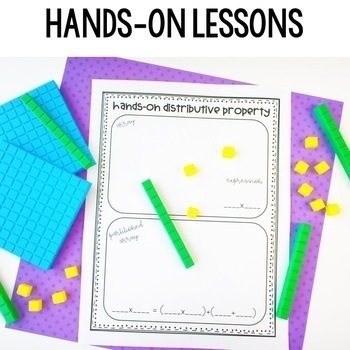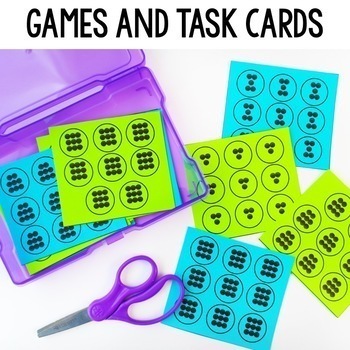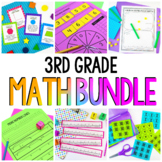Multiplication & Division Unit for 3rd Grade | Print & Digital
- PDF
- Google Apps™

What educators are saying
Also included in
- This 3rd Grade Math Bundle includes EVERYTHING you need to teach math in your 3rd grade classroom. These 3rd grade math units introduce and practice third grade math concepts through a combination of hands-on activities, skills practice, task cards, and games. Math concepts are introduced with a conPrice $65.20Original Price $81.50Save $16.30
Description
This multiplication and division unit has everything you need to teach multiplication and division in 3rd grade. You'll find conceptual lessons, hands-on activities, word problems, skill building worksheets, games, and answer keys. There are also detailed lesson plans and a pacing guide to help you plan your multiplication unit.
There are differentiation options to support remediation and enrichment for your students. Within the lessons there is a balance of concrete, pictorial, and abstract representations of all concepts and skills.
The skills taught in this multiplication and division unit include representing multiplication through repeated addition, arrays, and grouping models. There is also a focus on the properties of multiplication (identity property, associative property, commutative property, and distributive property). There are multiplication word problems, division word problems, and 2-step word problems incorporating all operations.
This can be your stand alone math curriculum, or it can be used to supplement your existing math curriculum.
Multiplication and Division Unit Includes
- Multiplication Pretest
- Multiplication Posttest
- Find the Product
- Spin and Multiply
- Counting to 24
- Dot Challenge
- Amanda Bean’s Amazing Dream
- Factor Patterns
- Multiplication Bump
- Multiplying Rice
- Array Challenge
- The Relatives Are Coming
- Pattern Block Multiplication
- Five in a Row
- Things That Come in Groups
- Array War
- Same but Different
- Skip Counting
- Roll and Color
- Multiplication Word Problems
- Multiplication Squares
- Commutative Property
- Hands-On Distributive Property
- Flipping for Multiplication
- How Many Ways
- Distributive Property Memory
- Find the Quotient
- Dividing Starfish
- Representing Division
- M&M Division
- Jellybean Arrays
- Division in Context
- Tell a Tale
- Sharing Cookies
- Pattern Block Division
- Party Planner
- Finish the Question
- Equal Group Situations
- Color Coding Word Problems
- Is it Commutative
- Error Analysis
- I Have Who Has Multiplication
- Division Concentration
Check out these other third grade math units!






